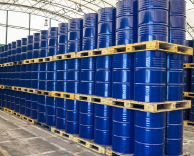How to Read and Understand Oil Can Labels for Optimal Machine Performance
Introduction
Standing in front of a shelf full of different oil cans, it can be difficult to choose which one exactly you need. However, choosing the right oil for your machine or vehicle is very important. The specifications on an oil label are directly related to the service life, reliability, maintenance cost, and safety of your machine. This article will take you step by step on how to read these labels so you can decide wisely.
Why Reading an Oil Can Label Matters
Some things you find on an oil can label are more than just branding. It also gives you the information on how the oil is behaving in extreme conditions, ensuring that the oil can meet your machine's requirements. Poor selection can lead to raised shock, lowered efficiency and even equipment failure. On the flip side, using the right oil provides you with a prolonged lifespan for your equipment, lowers your maintenance expenses, and increases efficiency.
Key Organizations Behind Oil Standards
Several organizations work together to create oil performance standards
API (American Petroleum Institute)
API licenses and certifies engine oils to address the lubrication, warranty and maintenance needs of original equipment manufacturers (OEMs). API Donut. This logo is the industry standard of recognition for verifying API-certified oils.
SAE (society of automotive engineers)
This numerical code system for the evaluation of oil viscosity is implemented and developed by the SAE. It helps to ensure that oils are tested against standardized performance criteria for automotive, aviation and commercial vehicular use.
Decoding the API Donut Logo
API Donut logo Although this marking is relatively standardized, it can be found on nearly all oil cans. Its structure is also threefold:
- Performance Grade: Indicates the type of oil (API SN, API CK-4, etc.)
- Viscosity Grade: It means the viscosity grade of the oil (SAE 10W-30)
- Energy-Conserving: Some oils indicate better fuel economy
Understanding Viscosity and SAE Grades
What Is Viscosity?
A fluid that has the property of being resistant to flow is known as viscosity. For engine oils, it is the viscosity of the oil at different temperatures. Thicker ones provide better high-temperature protection, and thinner oils are better when things are cold.
The Multigrade Oils And Their Advantages
For example, multigrade oils, like SAE 5W-30 or 10W-40, are intended for a broad temperature range. The W signifies it is a Winter oil and addresses how the oil behaves in the cold. For example, a 10W-30 oil has the viscosity of a 10-grade oil at cold temperatures and a 30-grade oil when hot.
For More Information About Minimac Systems - Click Here.
Important Types of Oil Cans
Low-Temperature Viscosity (i.e., 5W)
For example, in 5W, the first number (e.g., 5) represents the oil viscosity at low temperatures. Thinner oil flows better in cold climates — it helps to lubricate cold starts at lower temps — so lower numbers are better.
Hightemp Viscosity – like 30
The second number (30 in 5W-30) indicates the oil's viscosity at typical operating temperatures. Higher numbers mean thicker oil, which protects better in hot conditions.
Machine Performance and Oil Selection
The first step towards optimal performance of machines is the selection of the correct oil. The improper type of lubrication can cause friction, heat and wear, which will increase the cost of your equipment and find the end of its useful life. Instead, selecting oils that are able to meet the requirements of your equipment can provide many benefits, such as increased energy efficiency, less downtime as well and improved productivity.
Here is how to choose correctly:
- OEM Recommendations: I always list the appropriate specs in your equipment manual, so just follow along.
- Climate Conditions: Pick oils that can handle the temperature range in which you will be using them. For example, in colder regions it is better to use 5W-30 and in warmer regions 15W-40
- Type of Service: Some oils need the performance of certain additives to suit light or heavy-duty engines.
Tips for Proper Oil Selection:
- Verify the API Certification: Check if the oil has an API certification that meets the standards of the automobile industry for your vehicle.
- Check Viscosity Grades: Compare the SAE grade with the temperature of your area.
- Never Blend Oils: Always use the same oil for standard operation.
- Check the Label: ACEA (for instance), all the required or recommended certifications (wherever required).
Conclusion
It is important how you read and interpret oil can labels for the health of your machinery and vehicles. Focusing on API certifications, SAE viscosity grades, and other classifications is enough to gain good performance and relevant service life. Always check your equipment manual; select oils that are recommended for your specific requirements.
Learn more about our services and industry insights by visiting our official LinkedIn page: Minimac Systems





